“O, Excellent Air Bag”: Humphry Davy and Nitrous Oxide
August 6, 2014
Science
 The summer of 1799 saw a new fad take hold in one remarkable circle of British society: the inhalation of “Laughing Gas”. The overseer and pioneer of these experiments was a young Humphry Davy, future President of the Royal Society. Mike Jay explores how Davy’s extreme and near-fatal regime of self-experimentation with the gas not only marked a new era in the history of science but a turn toward the philosophical and literary romanticism of the century to come.
The Tale of Beatrix Potter
July 23, 2014
Books & Art
The summer of 1799 saw a new fad take hold in one remarkable circle of British society: the inhalation of “Laughing Gas”. The overseer and pioneer of these experiments was a young Humphry Davy, future President of the Royal Society. Mike Jay explores how Davy’s extreme and near-fatal regime of self-experimentation with the gas not only marked a new era in the history of science but a turn toward the philosophical and literary romanticism of the century to come.
The Tale of Beatrix Potter
July 23, 2014
Books & Art
 This year, the works of one of the most successful and universal writers of all time came into the public domain in many countries around the world. The Tale of Peter Rabbit, The Tale of Squirrel Nutkin, The Tale of Benjamin Bunny, The Tale of Jemima Puddle-Duck – in all, thirty-three books bearing the name “Beatrix Potter” have sold close to 200 million copies. Frank Delaney enquires into the more complex woman behind the safe and warm-hearted stories.
Julia Margaret Cameron in Ceylon: Idylls of Freshwater vs. Idylls of Rathoongodde
July 9, 2014
Photography
This year, the works of one of the most successful and universal writers of all time came into the public domain in many countries around the world. The Tale of Peter Rabbit, The Tale of Squirrel Nutkin, The Tale of Benjamin Bunny, The Tale of Jemima Puddle-Duck – in all, thirty-three books bearing the name “Beatrix Potter” have sold close to 200 million copies. Frank Delaney enquires into the more complex woman behind the safe and warm-hearted stories.
Julia Margaret Cameron in Ceylon: Idylls of Freshwater vs. Idylls of Rathoongodde
July 9, 2014
Photography
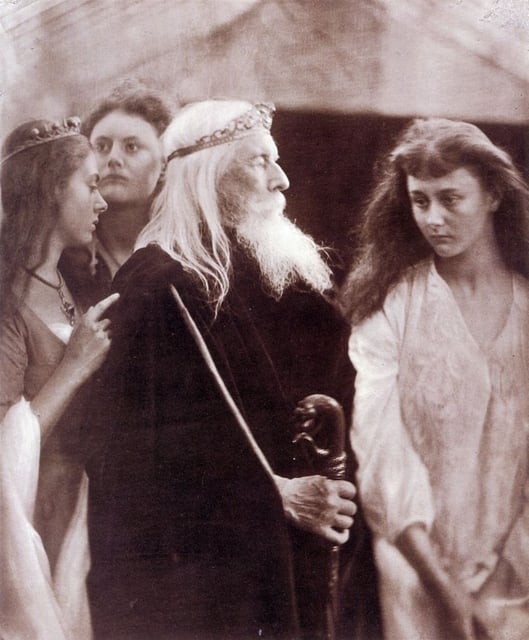 Leaving her close-knit artistic community on the Isle of Wight at the age of sixty to join her husband on the coffee plantations of Ceylon was not an easy move for the celebrated British photographer Julia Margaret Cameron. Eugenia Herbert explores the story behind the move and how the new environment was to impact Cameron’s art.
Picturing Pyrotechnics
June 25, 2014
Art & History
Leaving her close-knit artistic community on the Isle of Wight at the age of sixty to join her husband on the coffee plantations of Ceylon was not an easy move for the celebrated British photographer Julia Margaret Cameron. Eugenia Herbert explores the story behind the move and how the new environment was to impact Cameron’s art.
Picturing Pyrotechnics
June 25, 2014
Art & History
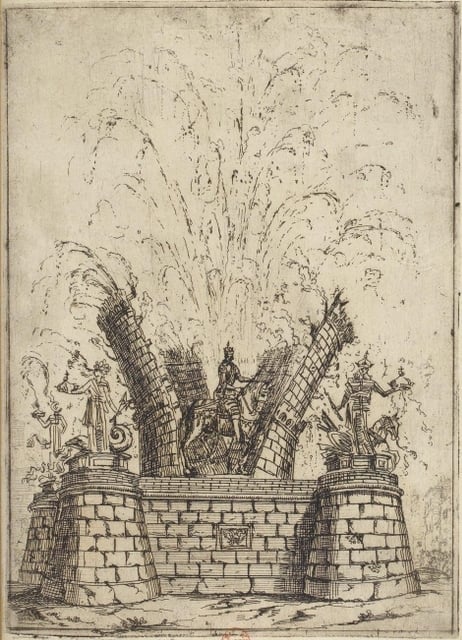 Simon Werrett explores how artists through the ages have responded to the challenge of representing firework displays, from the highly politicised and allegorical renderings of the early modern period to Whistler’s impressionistic Nocturne in Black and Gold.
Moonblight and Six Feet of Romance: Dan Carter Beard’s Foray into Fiction
June 11, 2014
Books & Literature & Art
Simon Werrett explores how artists through the ages have responded to the challenge of representing firework displays, from the highly politicised and allegorical renderings of the early modern period to Whistler’s impressionistic Nocturne in Black and Gold.
Moonblight and Six Feet of Romance: Dan Carter Beard’s Foray into Fiction
June 11, 2014
Books & Literature & Art
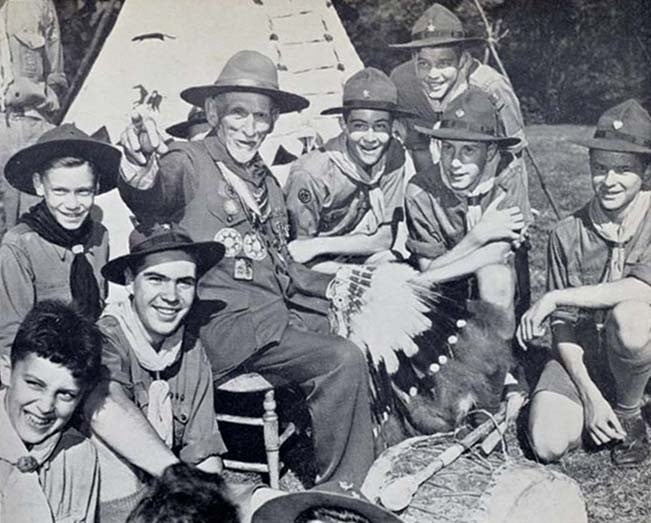 An esoteric disease which reveals things in their true light; three pairs of disembodied feet galavanting about the countryside – Abigail Walthausen explores the brief but strange literary career of Daniel Carter Beard, illustrator for Mark Twain and a founding father of the Boy Scouts of America.
The Naturalist and the Neurologist: On Charles Darwin and James Crichton-Browne
May 28, 2014
Photography & Science
An esoteric disease which reveals things in their true light; three pairs of disembodied feet galavanting about the countryside – Abigail Walthausen explores the brief but strange literary career of Daniel Carter Beard, illustrator for Mark Twain and a founding father of the Boy Scouts of America.
The Naturalist and the Neurologist: On Charles Darwin and James Crichton-Browne
May 28, 2014
Photography & Science
 Stassa Edwards explores Charles Darwin’s photography collection, which includes almost forty portraits of mental patients given to him by the neurologist James Crichton-Browne. The study of these photographs, and the related correspondence between the two men, would prove instrumental in the development of The Expression of the Emotions in Man and Animals (1872), Darwin’s book on the evolution of emotions.
In the Image of God: John Comenius and the First Children’s Picture Book
May 14, 2014
Books & Religion
In the mid 17th-century John Comenius published what many consider to be the first picture book dedicated to the education of young children, Orbis Sensualium Pictus – or The World of Things Obvious to the Senses drawn in Pictures, as it was rendered in English. Charles McNamara explores how, contrary to Comenius’ assertions, the book can be seen to be as much about the invisible world as the visible.
John L. Sullivan Fights America
April 30, 2014
History & Events
Stassa Edwards explores Charles Darwin’s photography collection, which includes almost forty portraits of mental patients given to him by the neurologist James Crichton-Browne. The study of these photographs, and the related correspondence between the two men, would prove instrumental in the development of The Expression of the Emotions in Man and Animals (1872), Darwin’s book on the evolution of emotions.
In the Image of God: John Comenius and the First Children’s Picture Book
May 14, 2014
Books & Religion
In the mid 17th-century John Comenius published what many consider to be the first picture book dedicated to the education of young children, Orbis Sensualium Pictus – or The World of Things Obvious to the Senses drawn in Pictures, as it was rendered in English. Charles McNamara explores how, contrary to Comenius’ assertions, the book can be seen to be as much about the invisible world as the visible.
John L. Sullivan Fights America
April 30, 2014
History & Events
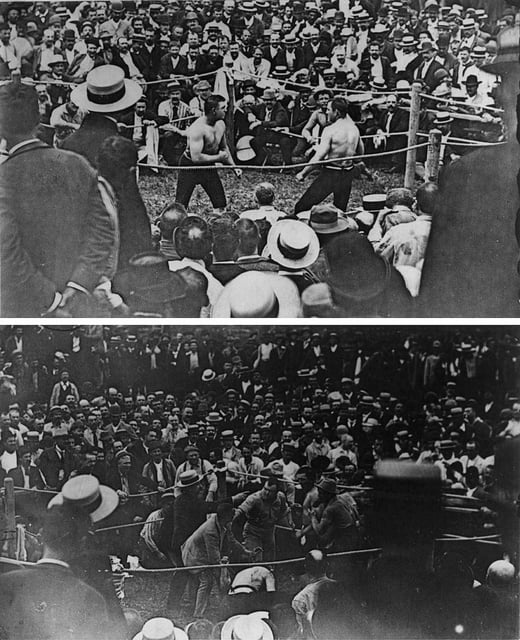 In 1883, the Irish-American heavy-weight boxing champion John L. Sullivan embarked on an unprecedented coast-to-coast tour of the United States offering a prize to any person who could endure four rounds with him in the ring. Christopher Klein tells of this remarkable journey and how the railroads and the rise of the popular press proved instrumental in forging Sullivan into America’s first sports superstar.
1592: Coining Columbus
April 16, 2014
Books & Art & History
In 1883, the Irish-American heavy-weight boxing champion John L. Sullivan embarked on an unprecedented coast-to-coast tour of the United States offering a prize to any person who could endure four rounds with him in the ring. Christopher Klein tells of this remarkable journey and how the railroads and the rise of the popular press proved instrumental in forging Sullivan into America’s first sports superstar.
1592: Coining Columbus
April 16, 2014
Books & Art & History
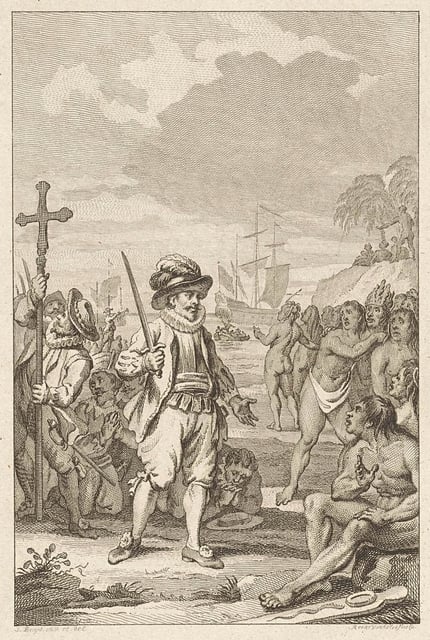 For many, the arrival of Christopher Columbus in the Americas is inextricably linked to a particular image: a small group of confident men on a tropical beach formally announcing their presence to the dumbfounded Amerindians. Michiel van Groesen explores the origins of this Eurocentric iconography and ascribes its persistence to the editorial strategy of the publisher who invented the initial design, a full century after Columbus’ encounter.
Darkness Over All: John Robison and the Birth of the Illuminati Conspiracy
April 2, 2014
History & Religion
For many, the arrival of Christopher Columbus in the Americas is inextricably linked to a particular image: a small group of confident men on a tropical beach formally announcing their presence to the dumbfounded Amerindians. Michiel van Groesen explores the origins of this Eurocentric iconography and ascribes its persistence to the editorial strategy of the publisher who invented the initial design, a full century after Columbus’ encounter.
Darkness Over All: John Robison and the Birth of the Illuminati Conspiracy
April 2, 2014
History & Religion
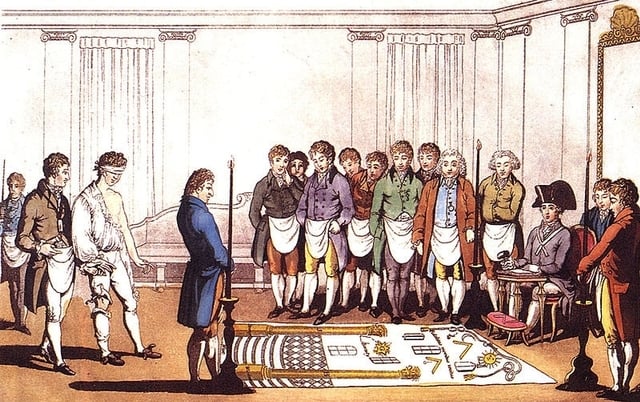 Conspiracy theories of a secretive power elite seeking global domination have long held a place in the modern imagination. Mike Jay explores the idea’s beginnings in the writings of John Robison, a Scottish scientist who maintained that the French revolution was the work of a covert Masonic cell known as the Illuminati.
Victorian Occultism and the Art of Synesthesia
March 19, 2014
Books & Painting & Philosophy & Art
Grounded in the theory that ideas, emotions, and even events, can manifest as visible auras, Annie Besant and Charles Leadbeater’s Thought-Forms (1901) is an odd and intriguing work. Benjamin Breen explores these “synesthetic” abstractions and asks to what extent they, and the Victorian mysticism of which they were born, influenced the Modernist movement that flourished in the following decades.
Frederik Ruysch: The Artist of Death
March 5, 2014
Science & Art
Conspiracy theories of a secretive power elite seeking global domination have long held a place in the modern imagination. Mike Jay explores the idea’s beginnings in the writings of John Robison, a Scottish scientist who maintained that the French revolution was the work of a covert Masonic cell known as the Illuminati.
Victorian Occultism and the Art of Synesthesia
March 19, 2014
Books & Painting & Philosophy & Art
Grounded in the theory that ideas, emotions, and even events, can manifest as visible auras, Annie Besant and Charles Leadbeater’s Thought-Forms (1901) is an odd and intriguing work. Benjamin Breen explores these “synesthetic” abstractions and asks to what extent they, and the Victorian mysticism of which they were born, influenced the Modernist movement that flourished in the following decades.
Frederik Ruysch: The Artist of Death
March 5, 2014
Science & Art
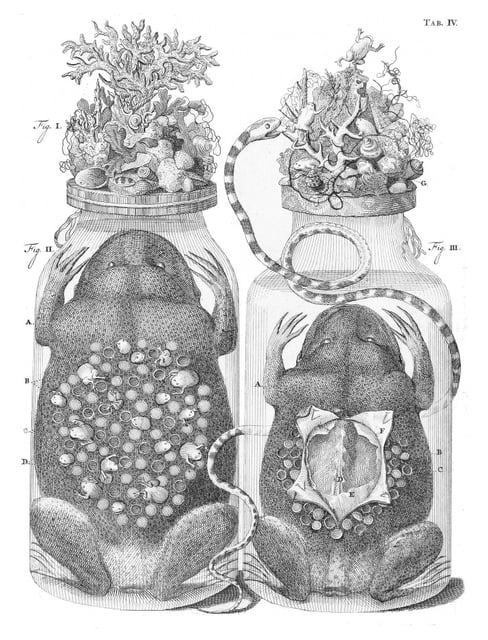 Luuc Kooijmans explores the work of Dutch anatomist Frederik Ruysch, known for his remarkable ‘still life’ displays which blurred the boundary between scientific preservation and vanitas art.
The Founding Fathers v. The Climate Change Skeptics
February 19, 2014
Science
When claims from Europe accused British America of being inferior on account of its colder weather, Thomas Jefferson and his fellow Founding Fathers responded with patriotic zeal that their settlement was actually causing the climate to warm. Raphael Calel explores how, in contrast to today’s common association of the U.S. with climate change skepticism, it was a very different story in the 18th century.
Olaus Magnus’ Sea Serpent
February 5, 2014
Painting & Science & Art
Luuc Kooijmans explores the work of Dutch anatomist Frederik Ruysch, known for his remarkable ‘still life’ displays which blurred the boundary between scientific preservation and vanitas art.
The Founding Fathers v. The Climate Change Skeptics
February 19, 2014
Science
When claims from Europe accused British America of being inferior on account of its colder weather, Thomas Jefferson and his fellow Founding Fathers responded with patriotic zeal that their settlement was actually causing the climate to warm. Raphael Calel explores how, in contrast to today’s common association of the U.S. with climate change skepticism, it was a very different story in the 18th century.
Olaus Magnus’ Sea Serpent
February 5, 2014
Painting & Science & Art
 The terrifying Great Norway Serpent, or Sea Orm, is the most famous of the many influential sea monsters depicted and described by 16th-century ecclesiastic, cartographer, and historian Olaus Magnus. Joseph Nigg, author of Sea Monsters, explores the iconic and literary legacy of the controversial serpent from its beginnings in the medieval imagination to modern cryptozoology.
Writing his Life through the Other: The Anthropology of Malinowski
January 22, 2014
Science & History
Last year saw the works of Bronislaw Malinowski – father of modern anthropology – enter the public domain in many countries around the world. Michael W. Young explores the personal crisis plaguing the Polish-born anthropologist at the end of his first major stint of ethnographic immersion in the Trobriand Islands, a period of self-doubt glimpsed through entries in his diary – the most infamous, most nakedly honest document in the annals of social anthropology.
Inside the Empty House: Sherlock Holmes, For King and Country
January 8, 2014
Literature & History
The terrifying Great Norway Serpent, or Sea Orm, is the most famous of the many influential sea monsters depicted and described by 16th-century ecclesiastic, cartographer, and historian Olaus Magnus. Joseph Nigg, author of Sea Monsters, explores the iconic and literary legacy of the controversial serpent from its beginnings in the medieval imagination to modern cryptozoology.
Writing his Life through the Other: The Anthropology of Malinowski
January 22, 2014
Science & History
Last year saw the works of Bronislaw Malinowski – father of modern anthropology – enter the public domain in many countries around the world. Michael W. Young explores the personal crisis plaguing the Polish-born anthropologist at the end of his first major stint of ethnographic immersion in the Trobriand Islands, a period of self-doubt glimpsed through entries in his diary – the most infamous, most nakedly honest document in the annals of social anthropology.
Inside the Empty House: Sherlock Holmes, For King and Country
January 8, 2014
Literature & History
 As a new series of BBC’s Sherlock revives the great detective after his apparent death, Andrew Glazzard investigates the domestic and imperial subterfuge beneath the surface of Sherlock Holmes’s 1903 return to Baker Street in Conan Doyle’s ‘The Empty House’.
Encounter at the Crossroads of Europe — the Fellowship of Zweig and Verhaeren
December 11, 2013
Books & Literature & History
Stefan Zweig, whose works passed into the public domain this year in many countries around the world, was one of the most famous writers of the 1920s and 30s. Will Stone explores the importance of the Austrian’s early friendship with the oft overlooked Belgian poet Emile Verhaeren.
Time and Place: Eric Ravilious (1903-1942)
November 27, 2013
Art
As a new series of BBC’s Sherlock revives the great detective after his apparent death, Andrew Glazzard investigates the domestic and imperial subterfuge beneath the surface of Sherlock Holmes’s 1903 return to Baker Street in Conan Doyle’s ‘The Empty House’.
Encounter at the Crossroads of Europe — the Fellowship of Zweig and Verhaeren
December 11, 2013
Books & Literature & History
Stefan Zweig, whose works passed into the public domain this year in many countries around the world, was one of the most famous writers of the 1920s and 30s. Will Stone explores the importance of the Austrian’s early friendship with the oft overlooked Belgian poet Emile Verhaeren.
Time and Place: Eric Ravilious (1903-1942)
November 27, 2013
Art
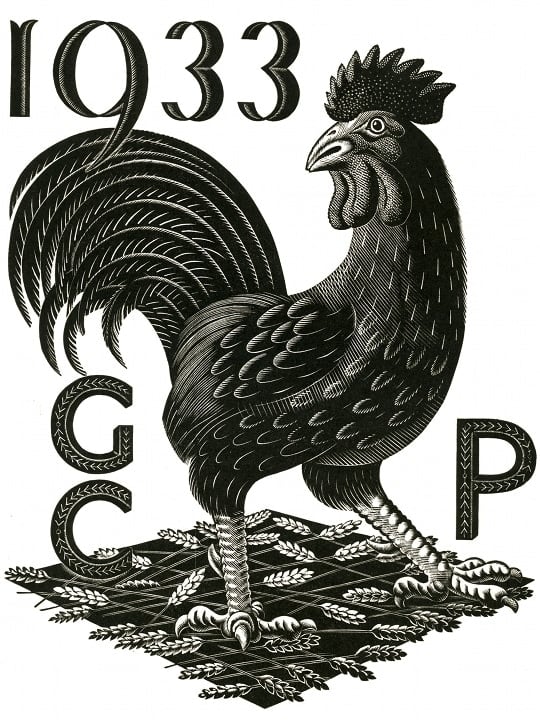 In many countries around the world the works of Eric Ravilious have come out of copyright this year – he died when his aircraft went missing off Iceland while he was making war paintings. An artist in multiple disciplines, his greater legacy dwells in water-colours. Frank Delaney re-visits the work of this understated, yet significant figure.
Lost in Translation: Proust and Scott Moncrieff
November 13, 2013
Books & Literature
Scott Moncrieff’s English translation of Proust’s A la recherche du temps perdu is widely hailed as a masterpiece in its own right. His rendering of the title as Remembrance of Things Past is not, however, considered a high point. William C. Carter explores the two men’s correspondence on this somewhat sticky issue and how the Shakespearean title missed the mark regarding Proust’s theory of memory.
Alfred Russel Wallace: a Heretic’s Heretic
October 30, 2013
Science & Religion
In many countries around the world the works of Eric Ravilious have come out of copyright this year – he died when his aircraft went missing off Iceland while he was making war paintings. An artist in multiple disciplines, his greater legacy dwells in water-colours. Frank Delaney re-visits the work of this understated, yet significant figure.
Lost in Translation: Proust and Scott Moncrieff
November 13, 2013
Books & Literature
Scott Moncrieff’s English translation of Proust’s A la recherche du temps perdu is widely hailed as a masterpiece in its own right. His rendering of the title as Remembrance of Things Past is not, however, considered a high point. William C. Carter explores the two men’s correspondence on this somewhat sticky issue and how the Shakespearean title missed the mark regarding Proust’s theory of memory.
Alfred Russel Wallace: a Heretic’s Heretic
October 30, 2013
Science & Religion
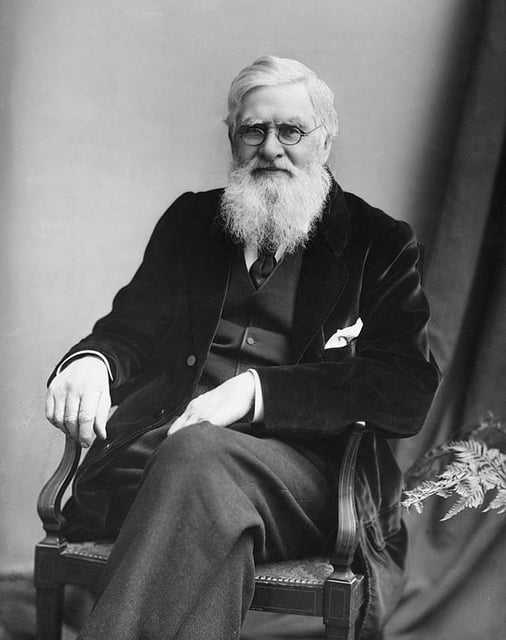 On the centenary of his death, Michael A. Flannery looks back at how Alfred Russel Wallace’s take on evolution, which radically reintroduced notions of purpose and design, still speaks to us in a post-Darwin world where problems of sentience and of the origin of life remain, some would argue, as intractable as ever.
Next page
On the centenary of his death, Michael A. Flannery looks back at how Alfred Russel Wallace’s take on evolution, which radically reintroduced notions of purpose and design, still speaks to us in a post-Darwin world where problems of sentience and of the origin of life remain, some would argue, as intractable as ever.
Next page
 The summer of 1799 saw a new fad take hold in one remarkable circle of British society: the inhalation of “Laughing Gas”. The overseer and pioneer of these experiments was a young Humphry Davy, future President of the Royal Society. Mike Jay explores how Davy’s extreme and near-fatal regime of self-experimentation with the gas not only marked a new era in the history of science but a turn toward the philosophical and literary romanticism of the century to come.
The Tale of Beatrix Potter
July 23, 2014
Books & Art
The summer of 1799 saw a new fad take hold in one remarkable circle of British society: the inhalation of “Laughing Gas”. The overseer and pioneer of these experiments was a young Humphry Davy, future President of the Royal Society. Mike Jay explores how Davy’s extreme and near-fatal regime of self-experimentation with the gas not only marked a new era in the history of science but a turn toward the philosophical and literary romanticism of the century to come.
The Tale of Beatrix Potter
July 23, 2014
Books & Art
 This year, the works of one of the most successful and universal writers of all time came into the public domain in many countries around the world. The Tale of Peter Rabbit, The Tale of Squirrel Nutkin, The Tale of Benjamin Bunny, The Tale of Jemima Puddle-Duck – in all, thirty-three books bearing the name “Beatrix Potter” have sold close to 200 million copies. Frank Delaney enquires into the more complex woman behind the safe and warm-hearted stories.
Julia Margaret Cameron in Ceylon: Idylls of Freshwater vs. Idylls of Rathoongodde
July 9, 2014
Photography
This year, the works of one of the most successful and universal writers of all time came into the public domain in many countries around the world. The Tale of Peter Rabbit, The Tale of Squirrel Nutkin, The Tale of Benjamin Bunny, The Tale of Jemima Puddle-Duck – in all, thirty-three books bearing the name “Beatrix Potter” have sold close to 200 million copies. Frank Delaney enquires into the more complex woman behind the safe and warm-hearted stories.
Julia Margaret Cameron in Ceylon: Idylls of Freshwater vs. Idylls of Rathoongodde
July 9, 2014
Photography
 Leaving her close-knit artistic community on the Isle of Wight at the age of sixty to join her husband on the coffee plantations of Ceylon was not an easy move for the celebrated British photographer Julia Margaret Cameron. Eugenia Herbert explores the story behind the move and how the new environment was to impact Cameron’s art.
Picturing Pyrotechnics
June 25, 2014
Art & History
Leaving her close-knit artistic community on the Isle of Wight at the age of sixty to join her husband on the coffee plantations of Ceylon was not an easy move for the celebrated British photographer Julia Margaret Cameron. Eugenia Herbert explores the story behind the move and how the new environment was to impact Cameron’s art.
Picturing Pyrotechnics
June 25, 2014
Art & History
 Simon Werrett explores how artists through the ages have responded to the challenge of representing firework displays, from the highly politicised and allegorical renderings of the early modern period to Whistler’s impressionistic Nocturne in Black and Gold.
Moonblight and Six Feet of Romance: Dan Carter Beard’s Foray into Fiction
June 11, 2014
Books & Literature & Art
Simon Werrett explores how artists through the ages have responded to the challenge of representing firework displays, from the highly politicised and allegorical renderings of the early modern period to Whistler’s impressionistic Nocturne in Black and Gold.
Moonblight and Six Feet of Romance: Dan Carter Beard’s Foray into Fiction
June 11, 2014
Books & Literature & Art
 An esoteric disease which reveals things in their true light; three pairs of disembodied feet galavanting about the countryside – Abigail Walthausen explores the brief but strange literary career of Daniel Carter Beard, illustrator for Mark Twain and a founding father of the Boy Scouts of America.
The Naturalist and the Neurologist: On Charles Darwin and James Crichton-Browne
May 28, 2014
Photography & Science
An esoteric disease which reveals things in their true light; three pairs of disembodied feet galavanting about the countryside – Abigail Walthausen explores the brief but strange literary career of Daniel Carter Beard, illustrator for Mark Twain and a founding father of the Boy Scouts of America.
The Naturalist and the Neurologist: On Charles Darwin and James Crichton-Browne
May 28, 2014
Photography & Science
 Stassa Edwards explores Charles Darwin’s photography collection, which includes almost forty portraits of mental patients given to him by the neurologist James Crichton-Browne. The study of these photographs, and the related correspondence between the two men, would prove instrumental in the development of The Expression of the Emotions in Man and Animals (1872), Darwin’s book on the evolution of emotions.
In the Image of God: John Comenius and the First Children’s Picture Book
May 14, 2014
Books & Religion
In the mid 17th-century John Comenius published what many consider to be the first picture book dedicated to the education of young children, Orbis Sensualium Pictus – or The World of Things Obvious to the Senses drawn in Pictures, as it was rendered in English. Charles McNamara explores how, contrary to Comenius’ assertions, the book can be seen to be as much about the invisible world as the visible.
John L. Sullivan Fights America
April 30, 2014
History & Events
Stassa Edwards explores Charles Darwin’s photography collection, which includes almost forty portraits of mental patients given to him by the neurologist James Crichton-Browne. The study of these photographs, and the related correspondence between the two men, would prove instrumental in the development of The Expression of the Emotions in Man and Animals (1872), Darwin’s book on the evolution of emotions.
In the Image of God: John Comenius and the First Children’s Picture Book
May 14, 2014
Books & Religion
In the mid 17th-century John Comenius published what many consider to be the first picture book dedicated to the education of young children, Orbis Sensualium Pictus – or The World of Things Obvious to the Senses drawn in Pictures, as it was rendered in English. Charles McNamara explores how, contrary to Comenius’ assertions, the book can be seen to be as much about the invisible world as the visible.
John L. Sullivan Fights America
April 30, 2014
History & Events
 In 1883, the Irish-American heavy-weight boxing champion John L. Sullivan embarked on an unprecedented coast-to-coast tour of the United States offering a prize to any person who could endure four rounds with him in the ring. Christopher Klein tells of this remarkable journey and how the railroads and the rise of the popular press proved instrumental in forging Sullivan into America’s first sports superstar.
1592: Coining Columbus
April 16, 2014
Books & Art & History
In 1883, the Irish-American heavy-weight boxing champion John L. Sullivan embarked on an unprecedented coast-to-coast tour of the United States offering a prize to any person who could endure four rounds with him in the ring. Christopher Klein tells of this remarkable journey and how the railroads and the rise of the popular press proved instrumental in forging Sullivan into America’s first sports superstar.
1592: Coining Columbus
April 16, 2014
Books & Art & History
 For many, the arrival of Christopher Columbus in the Americas is inextricably linked to a particular image: a small group of confident men on a tropical beach formally announcing their presence to the dumbfounded Amerindians. Michiel van Groesen explores the origins of this Eurocentric iconography and ascribes its persistence to the editorial strategy of the publisher who invented the initial design, a full century after Columbus’ encounter.
Darkness Over All: John Robison and the Birth of the Illuminati Conspiracy
April 2, 2014
History & Religion
For many, the arrival of Christopher Columbus in the Americas is inextricably linked to a particular image: a small group of confident men on a tropical beach formally announcing their presence to the dumbfounded Amerindians. Michiel van Groesen explores the origins of this Eurocentric iconography and ascribes its persistence to the editorial strategy of the publisher who invented the initial design, a full century after Columbus’ encounter.
Darkness Over All: John Robison and the Birth of the Illuminati Conspiracy
April 2, 2014
History & Religion
 Conspiracy theories of a secretive power elite seeking global domination have long held a place in the modern imagination. Mike Jay explores the idea’s beginnings in the writings of John Robison, a Scottish scientist who maintained that the French revolution was the work of a covert Masonic cell known as the Illuminati.
Victorian Occultism and the Art of Synesthesia
March 19, 2014
Books & Painting & Philosophy & Art
Grounded in the theory that ideas, emotions, and even events, can manifest as visible auras, Annie Besant and Charles Leadbeater’s Thought-Forms (1901) is an odd and intriguing work. Benjamin Breen explores these “synesthetic” abstractions and asks to what extent they, and the Victorian mysticism of which they were born, influenced the Modernist movement that flourished in the following decades.
Frederik Ruysch: The Artist of Death
March 5, 2014
Science & Art
Conspiracy theories of a secretive power elite seeking global domination have long held a place in the modern imagination. Mike Jay explores the idea’s beginnings in the writings of John Robison, a Scottish scientist who maintained that the French revolution was the work of a covert Masonic cell known as the Illuminati.
Victorian Occultism and the Art of Synesthesia
March 19, 2014
Books & Painting & Philosophy & Art
Grounded in the theory that ideas, emotions, and even events, can manifest as visible auras, Annie Besant and Charles Leadbeater’s Thought-Forms (1901) is an odd and intriguing work. Benjamin Breen explores these “synesthetic” abstractions and asks to what extent they, and the Victorian mysticism of which they were born, influenced the Modernist movement that flourished in the following decades.
Frederik Ruysch: The Artist of Death
March 5, 2014
Science & Art
 Luuc Kooijmans explores the work of Dutch anatomist Frederik Ruysch, known for his remarkable ‘still life’ displays which blurred the boundary between scientific preservation and vanitas art.
The Founding Fathers v. The Climate Change Skeptics
February 19, 2014
Science
When claims from Europe accused British America of being inferior on account of its colder weather, Thomas Jefferson and his fellow Founding Fathers responded with patriotic zeal that their settlement was actually causing the climate to warm. Raphael Calel explores how, in contrast to today’s common association of the U.S. with climate change skepticism, it was a very different story in the 18th century.
Olaus Magnus’ Sea Serpent
February 5, 2014
Painting & Science & Art
Luuc Kooijmans explores the work of Dutch anatomist Frederik Ruysch, known for his remarkable ‘still life’ displays which blurred the boundary between scientific preservation and vanitas art.
The Founding Fathers v. The Climate Change Skeptics
February 19, 2014
Science
When claims from Europe accused British America of being inferior on account of its colder weather, Thomas Jefferson and his fellow Founding Fathers responded with patriotic zeal that their settlement was actually causing the climate to warm. Raphael Calel explores how, in contrast to today’s common association of the U.S. with climate change skepticism, it was a very different story in the 18th century.
Olaus Magnus’ Sea Serpent
February 5, 2014
Painting & Science & Art
 The terrifying Great Norway Serpent, or Sea Orm, is the most famous of the many influential sea monsters depicted and described by 16th-century ecclesiastic, cartographer, and historian Olaus Magnus. Joseph Nigg, author of Sea Monsters, explores the iconic and literary legacy of the controversial serpent from its beginnings in the medieval imagination to modern cryptozoology.
Writing his Life through the Other: The Anthropology of Malinowski
January 22, 2014
Science & History
Last year saw the works of Bronislaw Malinowski – father of modern anthropology – enter the public domain in many countries around the world. Michael W. Young explores the personal crisis plaguing the Polish-born anthropologist at the end of his first major stint of ethnographic immersion in the Trobriand Islands, a period of self-doubt glimpsed through entries in his diary – the most infamous, most nakedly honest document in the annals of social anthropology.
Inside the Empty House: Sherlock Holmes, For King and Country
January 8, 2014
Literature & History
The terrifying Great Norway Serpent, or Sea Orm, is the most famous of the many influential sea monsters depicted and described by 16th-century ecclesiastic, cartographer, and historian Olaus Magnus. Joseph Nigg, author of Sea Monsters, explores the iconic and literary legacy of the controversial serpent from its beginnings in the medieval imagination to modern cryptozoology.
Writing his Life through the Other: The Anthropology of Malinowski
January 22, 2014
Science & History
Last year saw the works of Bronislaw Malinowski – father of modern anthropology – enter the public domain in many countries around the world. Michael W. Young explores the personal crisis plaguing the Polish-born anthropologist at the end of his first major stint of ethnographic immersion in the Trobriand Islands, a period of self-doubt glimpsed through entries in his diary – the most infamous, most nakedly honest document in the annals of social anthropology.
Inside the Empty House: Sherlock Holmes, For King and Country
January 8, 2014
Literature & History
 As a new series of BBC’s Sherlock revives the great detective after his apparent death, Andrew Glazzard investigates the domestic and imperial subterfuge beneath the surface of Sherlock Holmes’s 1903 return to Baker Street in Conan Doyle’s ‘The Empty House’.
Encounter at the Crossroads of Europe — the Fellowship of Zweig and Verhaeren
December 11, 2013
Books & Literature & History
Stefan Zweig, whose works passed into the public domain this year in many countries around the world, was one of the most famous writers of the 1920s and 30s. Will Stone explores the importance of the Austrian’s early friendship with the oft overlooked Belgian poet Emile Verhaeren.
Time and Place: Eric Ravilious (1903-1942)
November 27, 2013
Art
As a new series of BBC’s Sherlock revives the great detective after his apparent death, Andrew Glazzard investigates the domestic and imperial subterfuge beneath the surface of Sherlock Holmes’s 1903 return to Baker Street in Conan Doyle’s ‘The Empty House’.
Encounter at the Crossroads of Europe — the Fellowship of Zweig and Verhaeren
December 11, 2013
Books & Literature & History
Stefan Zweig, whose works passed into the public domain this year in many countries around the world, was one of the most famous writers of the 1920s and 30s. Will Stone explores the importance of the Austrian’s early friendship with the oft overlooked Belgian poet Emile Verhaeren.
Time and Place: Eric Ravilious (1903-1942)
November 27, 2013
Art
 In many countries around the world the works of Eric Ravilious have come out of copyright this year – he died when his aircraft went missing off Iceland while he was making war paintings. An artist in multiple disciplines, his greater legacy dwells in water-colours. Frank Delaney re-visits the work of this understated, yet significant figure.
Lost in Translation: Proust and Scott Moncrieff
November 13, 2013
Books & Literature
Scott Moncrieff’s English translation of Proust’s A la recherche du temps perdu is widely hailed as a masterpiece in its own right. His rendering of the title as Remembrance of Things Past is not, however, considered a high point. William C. Carter explores the two men’s correspondence on this somewhat sticky issue and how the Shakespearean title missed the mark regarding Proust’s theory of memory.
Alfred Russel Wallace: a Heretic’s Heretic
October 30, 2013
Science & Religion
In many countries around the world the works of Eric Ravilious have come out of copyright this year – he died when his aircraft went missing off Iceland while he was making war paintings. An artist in multiple disciplines, his greater legacy dwells in water-colours. Frank Delaney re-visits the work of this understated, yet significant figure.
Lost in Translation: Proust and Scott Moncrieff
November 13, 2013
Books & Literature
Scott Moncrieff’s English translation of Proust’s A la recherche du temps perdu is widely hailed as a masterpiece in its own right. His rendering of the title as Remembrance of Things Past is not, however, considered a high point. William C. Carter explores the two men’s correspondence on this somewhat sticky issue and how the Shakespearean title missed the mark regarding Proust’s theory of memory.
Alfred Russel Wallace: a Heretic’s Heretic
October 30, 2013
Science & Religion
 On the centenary of his death, Michael A. Flannery looks back at how Alfred Russel Wallace’s take on evolution, which radically reintroduced notions of purpose and design, still speaks to us in a post-Darwin world where problems of sentience and of the origin of life remain, some would argue, as intractable as ever.
Next page
On the centenary of his death, Michael A. Flannery looks back at how Alfred Russel Wallace’s take on evolution, which radically reintroduced notions of purpose and design, still speaks to us in a post-Darwin world where problems of sentience and of the origin of life remain, some would argue, as intractable as ever.
Next page